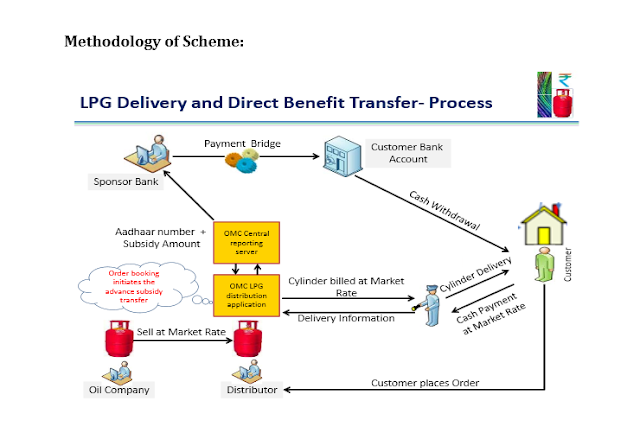DBTL stands for Direct Benefit Transfer for LPG consumer. As per this scheme an LPG consumer will get his/her cylinder at full market price and the differential between subsidized price and full market price i.e. the subsidy will be transferred to his/her bank account up to a capped limit (9 cylinders in a year).
About DBTL Scheme
- Effective 01.10.2013 domestic LPG Cylinders will be sold at market price.
- You will get cash subsidy in advance to buy your market priced LPG Cylinders directly in your Aadhaar Linked Bank Account as per your entitlement.
- Consumers who are unable to complete formalities by 01.01.2014 will receive subsidized LPG cylinders as they are getting today till 31.03.2014
- After 31.03.2014 all consumers who have to pay market price for LPG cylinder and subsidy will only be available to those who have completed the above formalities.
How to enroll in Direct Benefit Transfer of LPG Subsidy
1. Obtain Aadhaar Number, If you don't have one.
2. Link your Aadhaar Number to existing your bank account
For this use Form No. 1
Where to submit this Form No.1
Form No.1 may be deposited at your bank branch/drop box at your LPG Distributor Premises/select company Petrol Pumps
OR
IF you don't have bank account, open a new one and link your Aadhaar No.
For more details refer this web page
3. Link your Aadhaar Number with your LPG Consumer No.
How
Any one of following
1. By hand delivery: Fill the details in Form No. 2 and give it to the LPG distributor along with the enclosures mentioned in Form No. 2
2. By Calling: Call 18002333555 and inform the call centre agent that you wish to give your Aadhaar number and follow the instructions.
3.By Link through Website: Go to website, press start button and follow the seeding process.
4. By IVR
Call your company's number given below and follow IVR instruction:
IOCL : 09781324365 / 09669124365
HPCL : 09855623456 /8888823456
BPCL : 9420456789
IOCL : 09781324365 / 09669124365
HPCL : 09855623456 /8888823456
BPCL : 9420456789
5.By Sms : Send the following two separate SMSs
IOCL : 09781324365 /09669 124365
HPCL : 09855623456 /88888 23456
BPCL : 57333 & 52725 (Vodafone, MTNL,Idea,Airtel & Tata users) ( Mandi District)
1st SMS to register your mobile number
2nd SMS : Send your Aadhaar number from your registered mobile number UID Aadhaar number
IOCL : 09781324365 /09669 124365
HPCL : 09855623456 /88888 23456
BPCL : 57333 & 52725 (Vodafone, MTNL,Idea,Airtel & Tata users) ( Mandi District)
1st SMS to register your mobile number
2nd SMS : Send your Aadhaar number from your registered mobile number UID Aadhaar number
6. By Post
Send by Speed Post a copy of your Aadhaar letter, with your name, Consumer number, Address and Mobile Number to the relevant office address of the LPG Marketing Company. To know the office address visit the following websites:IOCL/ Indane
HPCL / HP Gas
BPCL / Bharat Gas
Forms
Form No.1 Bank Linking Form
Form No. 2 LPG Linking Form
Source:
http://www.petroleum.nic.in/dbtl/index.htm
https://rasf.uidai.gov.in/seeding/User/ResidentSplash.aspx
http://www.petroleum.nic.in/dbtl/method.pdf
http://www.petroleum.nic.in/dbtl/conditions.pdf
http://lite.epaper.timesofindia.com/getpage.aspx?pageid=19&pagesize=&edid=&edlabel=TOIM&mydateHid=07-09-2013&pubname=&edname=&publabel=TOI



